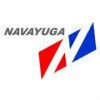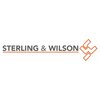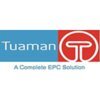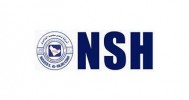
i
Hi Tech Projects
Filter interviews by
Hi Tech Projects Senior Safety Officer Interview Questions, Process, and Tips
Hi Tech Projects Senior Safety Officer Interview Experiences
1 interview found
I applied via Newspaper Ad and was interviewed before Dec 2023. There was 1 interview round.
(9 Questions)
- Q1. What is the Building and Other Construction Workers (BOCW) Act?
- Ans.
The Building and Other Construction Workers (BOCW) Act is a legislation in India that aims to regulate the employment and working conditions of construction workers.
The BOCW Act was enacted in 1996 to provide social security and welfare measures for construction workers.
It requires registration of construction workers, establishment of welfare boards, and provision of benefits such as health insurance and maternity ben...
- Q2. What is the Factory Act of 1948, and what regulations does it outline in each chapter?
- Ans.
The Factory Act of 1948 is a legislation in India that regulates the working conditions in factories.
The Factory Act of 1948 is a labor law in India that governs the health, safety, welfare, and working hours of workers in factories.
It outlines regulations related to the employment of young persons, annual leave with wages, working hours, overtime, and more.
Chapter III of the Act deals with the health, safety, and welf...
- Q3. What is the classification of industrial accidents according to IS Code 3786?
- Ans.
IS Code 3786 classifies industrial accidents into three categories based on severity.
IS Code 3786 classifies industrial accidents into Minor, Major, and Serious categories.
Minor accidents are those that result in injuries requiring first aid treatment only.
Major accidents are those that result in injuries requiring medical treatment beyond first aid.
Serious accidents are those that result in fatalities or permanent dis...
- Q4. Could you please describe the Management Information System (MIS)?
- Ans.
MIS is a computerized database that collects, processes, and presents information for decision-making in an organization.
MIS helps in organizing and analyzing data to support management decisions.
It includes software systems and hardware infrastructure to gather and process data.
MIS provides reports, summaries, and dashboards for managers to monitor performance and make informed decisions.
Examples of MIS include custom...
- Q5. What are the different types of fires, and how many types of extinguishing media are there?
- Ans.
There are five main types of fires: Class A, Class B, Class C, Class D, and Class K. There are five types of extinguishing media: water, foam, dry chemical, CO2, and wet chemical.
Class A fires involve ordinary combustibles such as wood and paper.
Class B fires involve flammable liquids like gasoline and oil.
Class C fires involve energized electrical equipment.
Class D fires involve combustible metals like magnesium and t...
- Q6. What is the risk rating and safe work method statement associated with Hira?
- Ans.
HIRA stands for Hazard Identification and Risk Assessment. It involves assigning a risk rating to identified hazards and developing safe work method statements.
HIRA involves identifying hazards in the workplace
Assigning a risk rating to each identified hazard based on the likelihood and severity of potential harm
Developing safe work method statements to mitigate or eliminate the identified hazards
Examples of safe work ...
- Q7. What are the roles and responsibilities of a safety officer on a project site?
- Ans.
Safety officer on a project site is responsible for ensuring compliance with safety regulations, conducting safety inspections, and implementing safety protocols.
Ensuring compliance with safety regulations and standards
Conducting regular safety inspections and audits
Implementing safety protocols and procedures
Providing safety training to workers and staff
Investigating accidents and incidents to determine root causes
Mai
- Q8. How can you define the hierarchy of risk control?
- Ans.
Hierarchy of risk control is a systematic approach to managing workplace hazards by prioritizing control measures.
Hierarchy includes elimination, substitution, engineering controls, administrative controls, and personal protective equipment (PPE)
Elimination involves removing the hazard completely (e.g. replacing a toxic chemical with a non-toxic one)
Substitution replaces the hazard with a less hazardous alternative (e....
- Q9. How do you ensure that all required documents are fulfilled and maintained according to auditing standards?
- Ans.
I ensure all required documents are fulfilled and maintained by implementing strict document control procedures and regular audits.
Implementing document control procedures to track all required documents
Regularly auditing documents to ensure compliance with standards
Training staff on document requirements and proper maintenance
Utilizing electronic document management systems for easy tracking and access
Interview Preparation Tips
- ADIS/ PDIS
- Technical Deploma
- Bachelor degree
Top trending discussions






Interview questions from similar companies

I applied via Approached by Company and was interviewed in Feb 2023. There were 3 interview rounds.

(1 Question)
- Q1. 1. Diff. Type Flow Meter Concept 2. Temperature Compensation in thermocouple 3. SPI modules 4. Level Mesurment
(1 Question)
- Q1. Personal Questions about salary negotiation
Interview Preparation Tips

Senior Engineer Interview Questions & Answers
S P Singla Constructionsposted on 30 Apr 2021
I applied via Walk-in and was interviewed in Apr 2021. There was 1 interview round.
Interview Questionnaire
5 Questions
- Q1. Details of precast structures (Segment)
- Ans.
Precast structures are pre-made concrete elements used in construction.
Precast segments are manufactured off-site and transported to the construction site for assembly.
They are commonly used in bridge construction, tunnels, and other large-scale infrastructure projects.
Precast segments can be designed to fit specific project requirements, reducing construction time and costs.
They offer high durability and strength, and...
- Q2. Which method use for segment casting?
- Ans.
Segment casting can be done using various methods depending on the material and application.
One method is sand casting, where a mold is created using sand and the molten metal is poured into it.
Another method is investment casting, where a wax pattern is created and coated with ceramic before the metal is poured.
Die casting is a method where molten metal is forced into a mold under high pressure.
Continuous casting is u...
- Q3. Grade of concrete.
- Ans.
Grade of concrete refers to its strength and durability.
Grade of concrete is denoted by a number followed by 'M' which stands for mix.
The number represents the compressive strength of concrete in megapascals (MPa).
Common grades of concrete include M10, M20, M30, etc.
Higher grade concrete has higher strength and durability.
For example, M20 grade concrete has a compressive strength of 20 MPa.
- Q4. Design mix of concrete.
- Ans.
Design mix of concrete refers to the proportion of materials used in making concrete.
Design mix is determined based on the strength and durability requirements of the concrete.
The mix includes cement, water, aggregates (sand, gravel, crushed stone), and sometimes admixtures.
The proportions of each material are specified in terms of weight or volume.
For example, a common mix for general use is 1:2:3 (cement:sand:gravel)...
- Q5. Method of segment casting.
- Ans.
Segment casting is a method of casting concrete segments for tunnel lining.
Segments are cast in a factory and transported to the tunnel site.
Segments are then assembled to form a complete tunnel lining.
This method is commonly used in tunnel construction projects.
It allows for faster construction and better quality control.
Examples include the Channel Tunnel and the SMART Tunnel in Malaysia.
Interview Preparation Tips
Skills evaluated in this interview

Senior Engineer Interview Questions & Answers
S P Singla Constructionsposted on 11 Dec 2023
I applied via Referral

(2 Questions)
- Q1. On site working
- Q2. Site Executions , Planning, Working on RDSI
(2 Questions)
- Q1. What's salary for providing
- Q2. Some documents are sub contractor's

Senior Engineer Interview Questions & Answers
Navayuga Engineering Companyposted on 27 May 2024
I applied via Referral and was interviewed before May 2023. There was 1 interview round.
(1 Question)
- Q1. Brief about my work experience
- Ans. I explained my experience in Highways & structures
Interview Preparation Tips

Senior Engineer Interview Questions & Answers
Oceaneering Internationalposted on 22 Feb 2022

(1 Question)
- Q1. Related to cad and design
Interview Preparation Tips

I applied via Naukri.com and was interviewed in Jan 2021. There were 3 interview rounds.
Interview Questionnaire
1 Question
- Q1. Asked about previous experience
Interview Preparation Tips

I applied via Walk-in and was interviewed in Aug 2023. There were 4 interview rounds.

(1 Question)
- Q1. About salary and experience
(4 Questions)
- Q1. Chiller trouble shooting
- Q2. Work of cchiller
- Ans.
A chiller is a machine that removes heat from a liquid via a vapor-compression or absorption refrigeration cycle.
Chillers are commonly used in air conditioning systems to cool buildings or industrial processes.
They work by transferring heat from the liquid being chilled to a separate fluid, which is then circulated through a heat exchanger to cool it down.
Chillers can be water-cooled or air-cooled, depending on the app
- Q3. Alarm and solutions
- Q4. Controlling andetc
Salary and job responsibilities


(1 Question)
- Q1. What are your salary expectations?

I applied via Walk-in and was interviewed in Oct 2022. There were 2 interview rounds.

(2 Questions)
- Q1. General questions related daily activities which are carried out at work site. What are the degree of slipping in excavation.
- Q2. What is jsa and HIRA Lifting plan
- Ans.
JSA is Job Safety Analysis and HIRA is Hazard Identification and Risk Assessment. Lifting plan is a document that outlines the safe lifting procedures.
JSA is a process of identifying potential hazards and risks associated with a specific job or task
HIRA is a systematic approach to identify, assess and control hazards and risks in the workplace
Lifting plan is a document that outlines the safe lifting procedures, includi...
Interview Preparation Tips
Hi Tech Projects Interview FAQs
Some of the top questions asked at the Hi Tech Projects Senior Safety Officer interview -
Tell us how to improve this page.
Hi Tech Projects Interviews By Designations
- Hi Tech Projects Safety Supervisor Interview Questions
- Hi Tech Projects Civil Supervisor Interview Questions
- Hi Tech Projects Junior Engineer Interview Questions
- Hi Tech Projects Senior Electrician Interview Questions
- Hi Tech Projects Financial Accountant Interview Questions
- Hi Tech Projects Assistant Engineer Interview Questions
- Hi Tech Projects Project Manager Interview Questions
- Hi Tech Projects Quality Engineer Interview Questions
- Show more
Interview Questions for Popular Designations
- Safety Engineer Interview Questions
- Safety Manager Interview Questions
- Safety Officer Interview Questions
- Senior Safety Engineer Interview Questions
- Fire & Safety Officer Interview Questions
- Safety Supervisor Interview Questions
- Fire & Safety Supervisor Interview Questions
- Senior Safety Supervisor Interview Questions
- Show more
Hi Tech Projects Senior Safety Officer Interview Process
based on 1 interview
Interview experience
Interview Questions from Similar Companies
Hi Tech Projects Senior Safety Officer Reviews and Ratings
based on 4 reviews
Rating in categories
|
Planning & Billing Engineer
24
salaries
| ₹4 L/yr - ₹8.1 L/yr |
|
Safety Officer
21
salaries
| ₹3.6 L/yr - ₹5.4 L/yr |
|
Junior Engineer Civil
18
salaries
| ₹1.8 L/yr - ₹4.5 L/yr |
|
Junior Engineer
14
salaries
| ₹2.9 L/yr - ₹4.5 L/yr |
|
Assistant Engineer
12
salaries
| ₹3.6 L/yr - ₹6.2 L/yr |

Sterling & Wilson

Nasser S. Al Hajri Corporation

Navayuga Engineering Company

B.L. Kashyap & Sons
- Home >
- Interviews >
- Hi Tech Projects Interview Questions >
- Hi Tech Projects Senior Safety Officer Interview Questions








